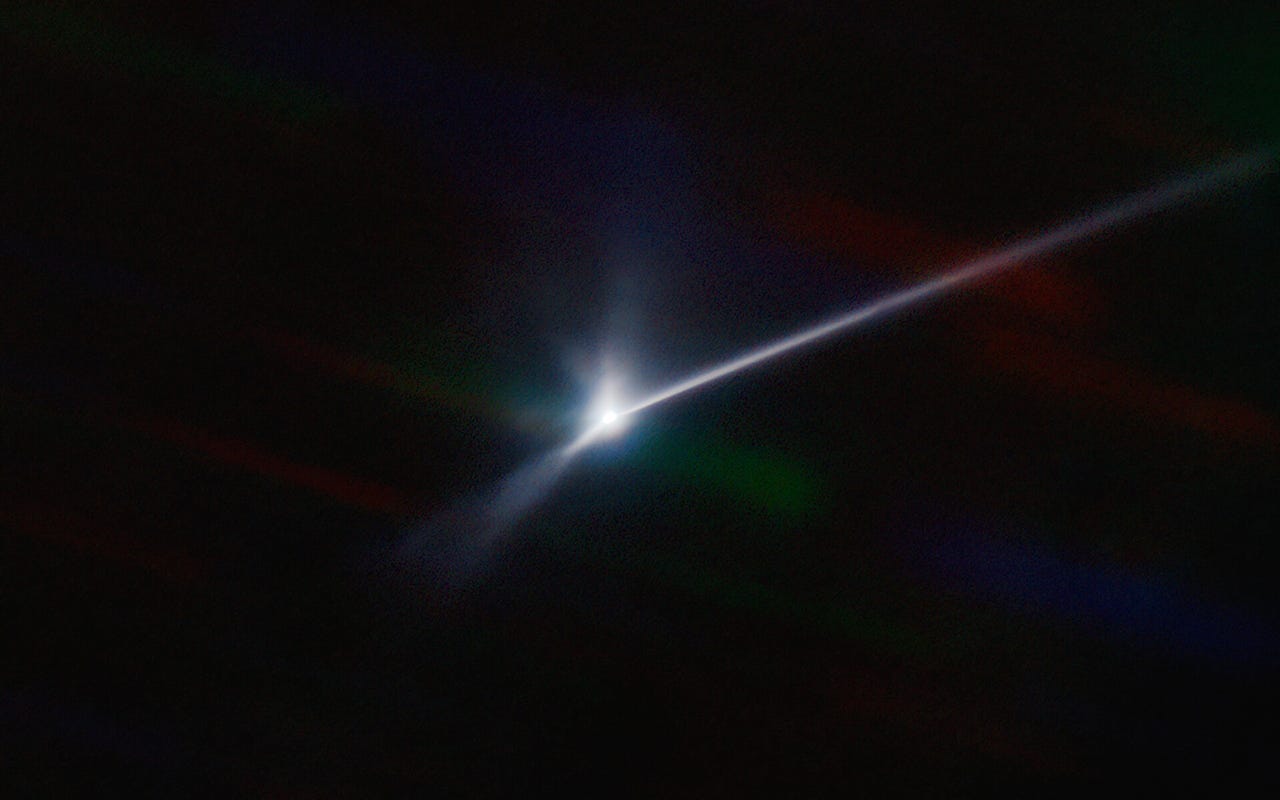After being smashed into by a NASA spacecraft, Dimorphos asteroid grows a tail


Last week, NASA intentionally sent a spacecraft to smash into the Dimorphos asteroid in its DART (Double Asteroid Redirection Test) mission. Since then, telescopes have captured images of the fascinating aftermath.
The latest, an image taken by the SOAR Telescope in Chile, shows a comet-like bright streak of dust emerging from the asteroid and stretching across the sky.
Featured
Astronomers Teddy Kareta from Arizona's Lowell Observatory and Matthew Knight of the US Naval Academy used the 4.1-meter Southern Astrophysical Research (SOAR) Telescope in Chile to capture an image of the vast plume of debris that emerged from the asteroid two days after impact.
SEE: The NASA DART mission smashed a spacecraft into an asteroid. Now what?
The image shows a dust trail of ejecta that has been pushed away by the Sun's radiation pressure and stretches at least 10,000 kilometers.
"It is amazing how clearly we were able to capture the structure and extent of the aftermath in the days following the impact," Kareta said in the October 3 image release.
SEE: NASA DART mission: The last images the space probe took before getting smashed
The kinetic impact that resulted from the spacecraft crashing into the asteroid caused dust particles and debris, ejecta, to emerge into space. Studying the ejecta allows scientists to learn about the effects of the impact, such as if the asteroid changed course and about the nature of the asteroid's surface.
"Now begins the next phase of work for the DART team as they analyze their data and observations by our team and other observers around the world who shared in studying this exciting event," said Knight. "We plan to use SOAR to monitor the ejecta in the coming weeks and months."
Although the first part of the mission, hitting the asteroid, was a success, the second part of the mission, observing the aftermath of the impact and seeing if the asteroid's path changed, is just as important to the mission's goal of preventing an asteroid from wiping out humankind in the future.
"You know, if you went up and you tried to move an asteroid to deflect it from hitting the Earth and it didn't move, that's not successful, right?" Carolyn Ernst, DART DRACO instrument scientist at Johns Hopkins APL, said to ZDNET.